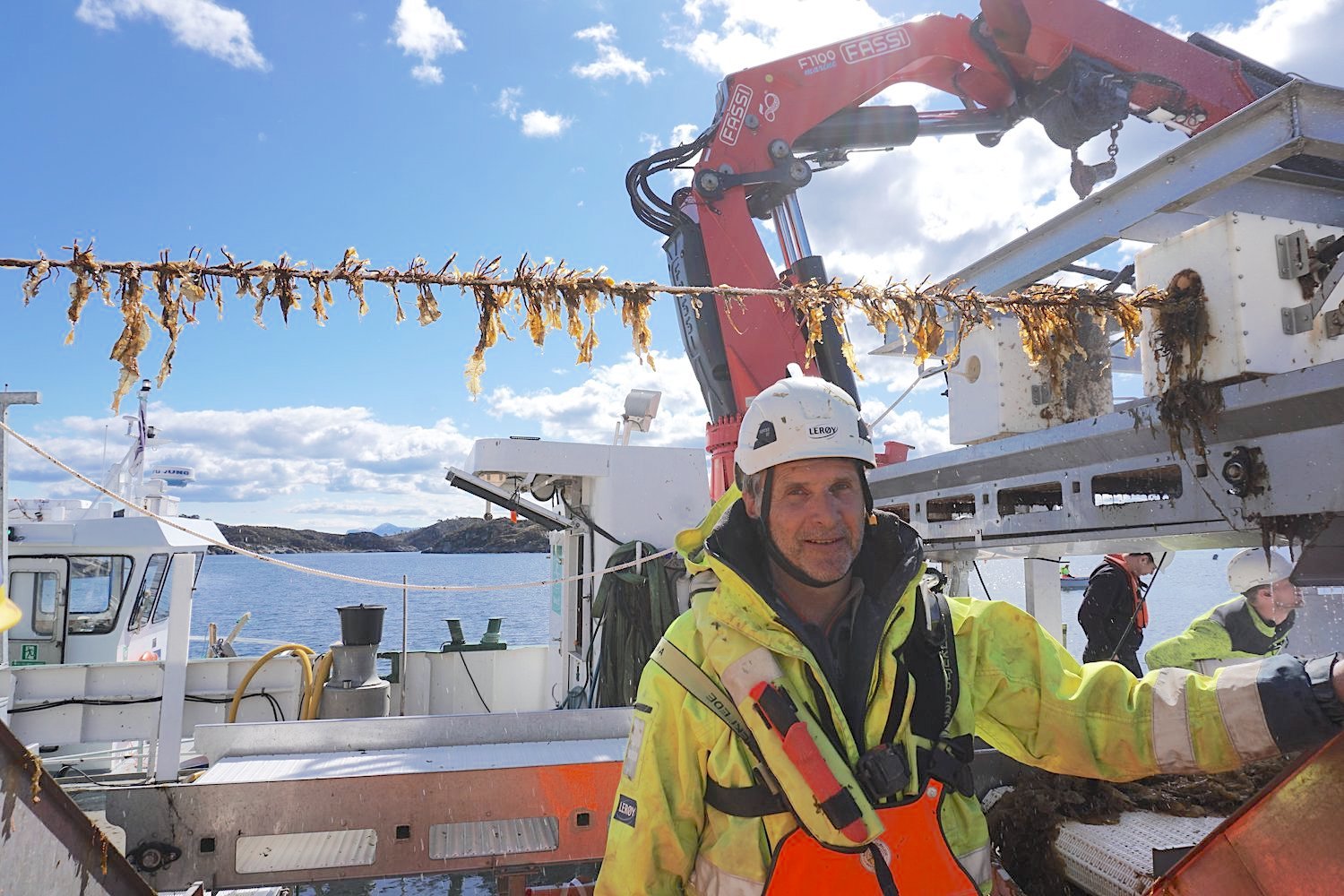Precious Kelp
Explorative research outcomes from the Material Scenario phase.
The Norwegian LERØY seafood group is farming and harvesting marine resources such as red and white fish. The Ocean Forest project has a high value creation potential within its aquaculture waste, from cultivating kelp brown algae-sugar kelp, macro-algae and mussels farming.
Lerøy Ocean Forest vision is to achieve more efficient recycling of the unexploited resources in the environments surrounding our fish farms, absorb CO2 and create biomass from species lower down the food chain, thereby reducing the environmental footprint of aquaculture.
We initiated an explorative research, mapping and exploring new possibilities for LERØY production biomass residues. This project’s ambition is unleash the possibilities for value creation from seaweed through industrialised bio-materials and bio-based products from both unpredictable and predictable marine waste streams.
Lerøy harvests seaweed in Austevoll for its capacity to bind nitrogen, phosphorus and carbon dioxide. The current production is estimated to 45 tons per day. Because of the low carbon footprint, high financial income and low resources required, the production is expected to double by spring 2023 and reach 100.000 tons in five years. The current global seaweed production is estimated to 20 million tons.
Harald Sveier, LERØY Head of Innovation, on the pilot site outside of Bergen, Norway.
Categories
Explorative research
Delivery
Value chain mapping
State-of-the-art
Material scenarios
Product concepts
Timeline
2023
Client
LERØY Ocean Harvest
Research team
Alexandre Bau
Birgitta Ralston
Blandine Zaba
Rebecca Rui
Linda Figueiredo



